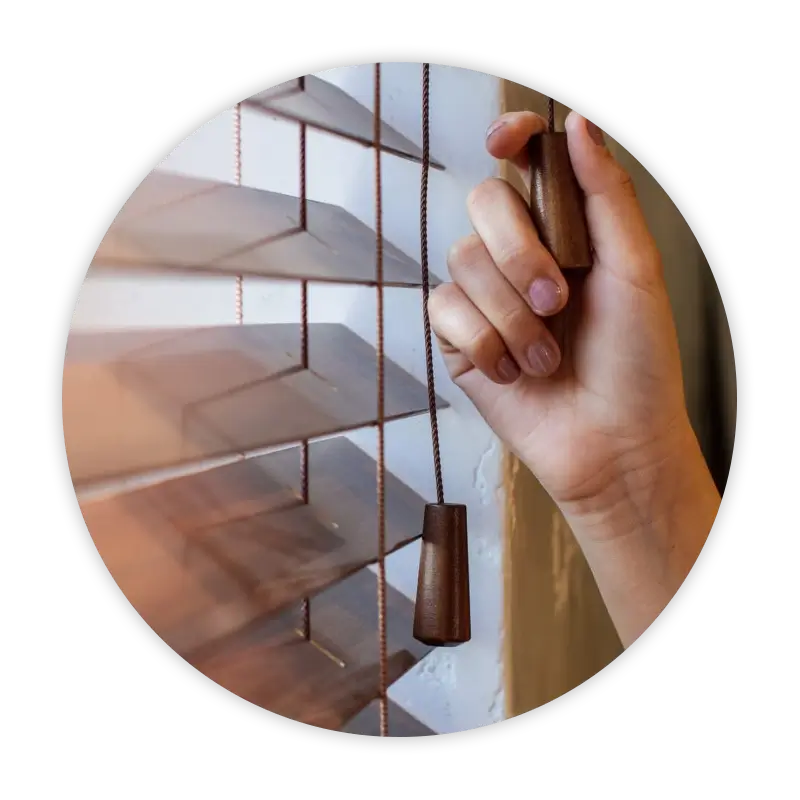Windows are more than portals to the world outside; they’re defining elements in a room’s personality. The choice between blinds and curtains can set the entire tone—from the elegance of soft, flowing drapes to the crisp lines of modern blinds. Each brings unique strengths in style, light control, and functionality.
To help you find the ideal match for your style and practical needs, we’ll break down what makes blinds and curtains unique so you can choose a treatment that brings out the best in your space.
Style and Aesthetic Appeal
Curtains
Known for their elegance and versatility, curtains can set the tone in a room—from luxurious and formal to light and airy. They come in countless colours, patterns, and fabrics, offering nearly endless options to complement your interior design style. If you’re after a warm, cozy ambiance, heavier drapes can add comfort and sophistication, while sheer curtains can bring in more light and a delicate touch.
Blinds
Blinds, on the other hand, offer a sleek, modern aesthetic. Styles like roller, vertical, or wood blinds add a clean, minimalist look that works especially well with contemporary or industrial decor. Blinds often deliver that tailored look for spaces that benefit from a touch of structure or where you want an unobtrusive design element.
Style Tip: If you want to mix things up, layering sheer curtains with blinds can create a polished, dimensional look that combines the softness of curtains with the functionality of blinds.
Light Control and Privacy
Curtains
Curtains offer moderate control over light and privacy, but it depends on the fabric’s opacity. Sheer curtains let in soft natural light but don’t provide much privacy. In contrast, blackout curtains are great for bedrooms or media rooms where total darkness is preferred. However, adjusting light and privacy levels with curtains isn’t as precise as with blinds.
Blinds
Blinds provide superior control over light and privacy. You can angle slats to adjust how much light enters or pull the blinds entirely up or down. Vertical blinds, in particular, give you full control over light and privacy, making them a popular choice for living rooms and offices where varied lighting is beneficial throughout the day.
Privacy Note: For bathrooms and bedrooms, blinds may offer more flexibility, allowing you to tilt the slats to enjoy privacy without sacrificing natural light.
Ease of Maintenance
Curtains
Curtains require more maintenance, especially in homes with pets or small children. They can gather dust, hair, or stains and require periodic washing or dry cleaning. However, they are easy to remove and rehang, and some fabrics are machine washable, making it convenient to keep them fresh.
Blinds
Blinds are typically easier to clean than curtains. A simple dusting or wipe-down with a damp cloth keeps most blinds looking new. While materials like wood may need occasional polishing, vinyl and aluminum blinds are low-maintenance and ideal for high-traffic areas or spaces prone to moisture, like kitchens or bathrooms.
Cleaning Tip: If you want low-effort upkeep, blinds may be the better choice, as they don’t require removal and can often be cleaned while still installed.
Energy Efficiency and Insulation
Curtains
Curtains, especially heavier fabrics like velvet or lined cotton, can be surprisingly effective at insulating a room. They trap air between the fabric and the window, keeping your home warmer in winter and cooler in summer. Insulated curtains can help reduce heating and cooling costs for those conscious about energy bills.
Blinds
Certain blinds, like honeycomb or cellular shades, also offer insulating properties. Their unique structure traps air within the cells, which can help maintain a consistent indoor temperature. However, standard blinds may not provide the same level of insulation as thicker curtain materials.
Energy Saver’s Pick: If insulation is a priority, look for honeycomb blinds or thermal-backed curtains for optimal energy efficiency.
Cost and Longevity
Curtains
Curtains come in a wide price range, depending on the fabric and brand. While some high-end materials can be costly, curtains generally have a long lifespan when cared for properly. Premium materials and custom curtains can be a more significant upfront investment, but they also offer a refined look that can last for years.
Blinds
Blinds are often more affordable upfront, though some materials, like wood, can be pricier. Quality blinds can last a long time with minimal upkeep, making them a practical choice if you want durability without a big investment. Over time, some cheaper blinds may need replacement, so consider the material when budgeting.
Budget-Friendly Tip: If you’re looking for a cost-effective solution, faux wood or vinyl blinds can offer style and longevity at a lower price than high-end curtains.
Making the Right Choice for You
Choosing between blinds and curtains depends on your lifestyle, room function, and design preferences. Here’s a quick recap:
- Choose curtains if you prefer a cozy, versatile aesthetic and are willing to spend more time on upkeep. Curtains are ideal for spaces where you want soft light or added insulation.
- Opt for blinds if you’re after precise light control, lower maintenance, and a modern, minimalist style. Blinds are especially practical for kitchens, bathrooms, or home offices.
Or, if you’re feeling adventurous, combine the two! Layering curtains over blinds can give you the best of both worlds, adding depth and versatility to your window treatments.
Whichever you choose, the right window covering can make a difference in your space, adding comfort, style, and functionality that suits your unique needs.
